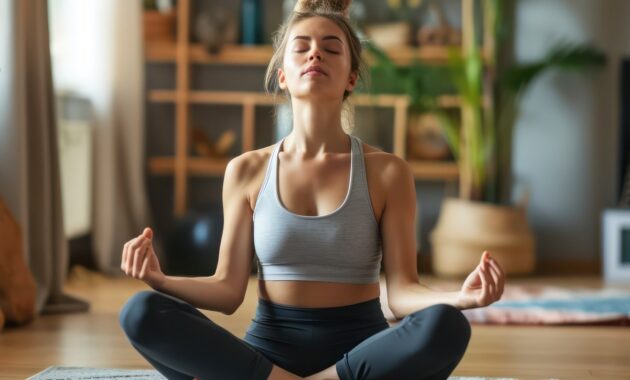Are you tired of taking medicines to get rid of headaches? Try these simple breathing exercises for headaches and get some relief.
If you suffer from regular headache attacks, you know how tough it can be to do your daily work. Headaches can affect your stability, focus, and attention, hindering your daily life. However, you don’t have to let the excruciating pain bring your life to a halt. Did you know that incorporating simple and natural breathing exercises into your daily routine could be the solution to your problem? These easy breathing exercises for headaches can provide you with instant relief. Here are the benefits of breathing exercises for headaches and how you can include them in your daily routine.
How do breathing exercises help to treat a headache?
Performing breathing exercises is a great way to relax, reduce stress, and enhance oxygen flow to the mind. When we experience tension or stress, our breathing tends to become shallow, which can lead to headaches. By practising deep breathing exercises, we engage with the diaphragm and promote deeper, more efficient breathing, which can alleviate tension and reduce the severity of headaches. Additionally, deep breathing exercises activate the parasympathetic nervous system, triggering the relaxation response and helping to relieve stress-related headaches.

6 breathing exercises for headaches
Here is a complete list of the best breathing exercises that help you reduce headaches, as Fitness Expert, Yash Agarwal explained.
1. Deep respiration
1. Sit down in a relaxed position.
2. Inhale deeply through your nostril, increasing your belly as you breathe in.
3. Exhale all the air from your lungs through your mouth.
4. Repeat for numerous breaths.
2. Innovative muscle relaxation (IMR)
1. Start by focusing on your toes. Consciously tense the muscles in that area for a few seconds, then relax.
2. Repeat this process for each muscle group as you work your way up your body, including your legs, abdomen, hands, and even your facial muscles.
3. Take your time and pay attention to how it feels as you release the tension. With each relaxation, feel the calmness spread throughout your body, leaving you at peace.
Also Read

3. Alternate nose respiratory (Nadi Shodhana)
1. Sit down comfortably but make sure your back is straight.
2. Use your right thumb to close your right nostril and take a deep breath through your left nostril.
3. Next, close your left nostril with your right ring finger and exhale through your right nostril.
4. Inhale through your right nostril, then switch and exhale through your left nostril.
5. Repeat this sequence for several breaths.
4. Four-7-eight respiratory
1. Sit down comfortably on the ground or chair.
2. Inhale via your nostril for a count of four seconds.
3. Maintain your breath for 7 seconds.
4. Exhale slowly via your mouth for 8 seconds.
5. Repeat this cycle for numerous breaths.
Also Read: 7 yoga poses to fix tension headache
5. Belly respiration
1. Lie down on your back with one hand on your chest and the other on your stomach.
2. Inhale deeply through your nose, feeling your abdomen push upward as you breathe in.
3. Exhale slowly through your mouth.
4. Consciously take deep breaths using your diaphragm to inhale deeply into your belly.
6. Box breathing
1. Inhale deeply via your nose for 4 seconds. Maintain your breath for four seconds.
2. Exhale slowly via your mouth for four seconds. Hold your breath once more for 4 seconds.
3. Repeat this cycle for numerous breaths.
Are there any side effects of these breathing exercises?
Although respiration exercises are generally safe for most people, some people may experience side effects such as lightheadedness, dizziness, or hyperventilation if they breathe too deeply or rapidly. It is important to practise breathing exercises mindfully and at a pace that feels comfortable for you. If you experience any adverse effects, stop the exercise immediately and consult a healthcare professional.

Is it advisable to practise breathing exercises after a meal?
Breathing exercises work best on an empty stomach. For optimal effects, wait a few hours (2-4 hours) after eating to perform any breathing exercises.
Which substances need to be avoided to perform breathing exercises?
Alcohol, smoking, and caffeine should be avoided before exercising. If not, they will distort the advantages of healthy breathing.
#breathing #exercises #headaches
